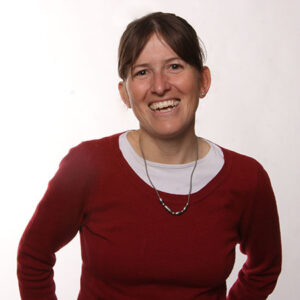Functionality through multistability: from soft robots to deployable structures
Speaker: Dr. Katia Bertoldi - Harvard University, Cambridge, MA
Date: Oct 7, 2022; Time: 2:30 PM Location: UTEB 150
 Abstract: Inflating a rubber balloon leads to a dramatic shape change: a property that is exploited in the design of soft robots and deployable structures. On the one hand, fluid-driven actuators capable of complex motion can power highly adaptive and inherently safe soft robots. On the other hand, inflation can be used to transform seemingly flat shapes into shelters, field hospitals, and space modules. In both cases, just like the simple balloon, only one input is required to achieve the desired deformation. This simplicity, however, brings strict limitations: soft actuators are often restricted to unimodal and slow deformation and deployable structures need a continuous supply of pressure to remain upright. Here, we embrace multistability as a paradigm to improve the functionality of inflatable systems. In the first part of this seminar, I exploit snapping instabilities in spherical shells to decouple the input signal from the output deformation in soft actuators–a functionality that can be utilized to design a soft machine capable of jumping. In the second part of the seminar, I draw inspiration from origami to design multistable and inflatable structures at the meter scale. Because these deployable systems are multistable, pressure can be disconnected when they are fully expanded, making them ideal candidates for applications such as emergency sheltering and deep space exploration. Together, these two projects highlight the potential of multistability in enabling the design and fabrication across various scales of multi-form, multi-functional, and multi-purpose materials and structures.
Abstract: Inflating a rubber balloon leads to a dramatic shape change: a property that is exploited in the design of soft robots and deployable structures. On the one hand, fluid-driven actuators capable of complex motion can power highly adaptive and inherently safe soft robots. On the other hand, inflation can be used to transform seemingly flat shapes into shelters, field hospitals, and space modules. In both cases, just like the simple balloon, only one input is required to achieve the desired deformation. This simplicity, however, brings strict limitations: soft actuators are often restricted to unimodal and slow deformation and deployable structures need a continuous supply of pressure to remain upright. Here, we embrace multistability as a paradigm to improve the functionality of inflatable systems. In the first part of this seminar, I exploit snapping instabilities in spherical shells to decouple the input signal from the output deformation in soft actuators–a functionality that can be utilized to design a soft machine capable of jumping. In the second part of the seminar, I draw inspiration from origami to design multistable and inflatable structures at the meter scale. Because these deployable systems are multistable, pressure can be disconnected when they are fully expanded, making them ideal candidates for applications such as emergency sheltering and deep space exploration. Together, these two projects highlight the potential of multistability in enabling the design and fabrication across various scales of multi-form, multi-functional, and multi-purpose materials and structures.
Biographical Sketch: Katia Bertoldi is the William and Ami Kuan Danoff Professor of Applied Mechanics at the Harvard John A.Paulson School of Engineering and Applied Sciences. She earned master degrees from Trento University (Italy) in 2002 and from Chalmers University of Technology (Sweden) in 2003, majoring in Structural Engineering Mechanics. Upon earning a Ph.D. degree in Mechanics of Materials and Structures from Trento University, in 2006, Katia joined as a PostDoc the group of Mary Boyce at MIT. In 2008 she moved to the University of Twente (the Netherlands) where she was an Assistant Professor in the faculty of Engineering Technology. In January 2010 Katia joined the School of Engineering and Applied Sciences at Harvard University and established a group studying the mechanics of materials and structures. She is the recipient of the NSF Career Award 2011 and of the ASME’s 2014 Hughes Young Investigator Award. She serves as Editor for the journals Extreme Mechanics Letters and New Journal of Physics. She published over 150 peer-reviewed papers and several patents. For a complete list of publication and research information: https://bertoldi.seas.harvard.edu/. Dr Bertoldi’s research contributes to the design of materials with a carefully designed meso-structure that leads to novel effective behavior at the macroscale. She investigates both mechanical and acoustic properties of such structured materials, with a particular focus on harnessing instabilities and strong geometric non-linearities to generate new modes of functionality. Since the properties of the designed architected materials are primarily governed by the geometry of the structure (as opposed to constitutive ingredients at the material level), the principles she discovers are universal and can be applied to systems over a wide range of length scales.